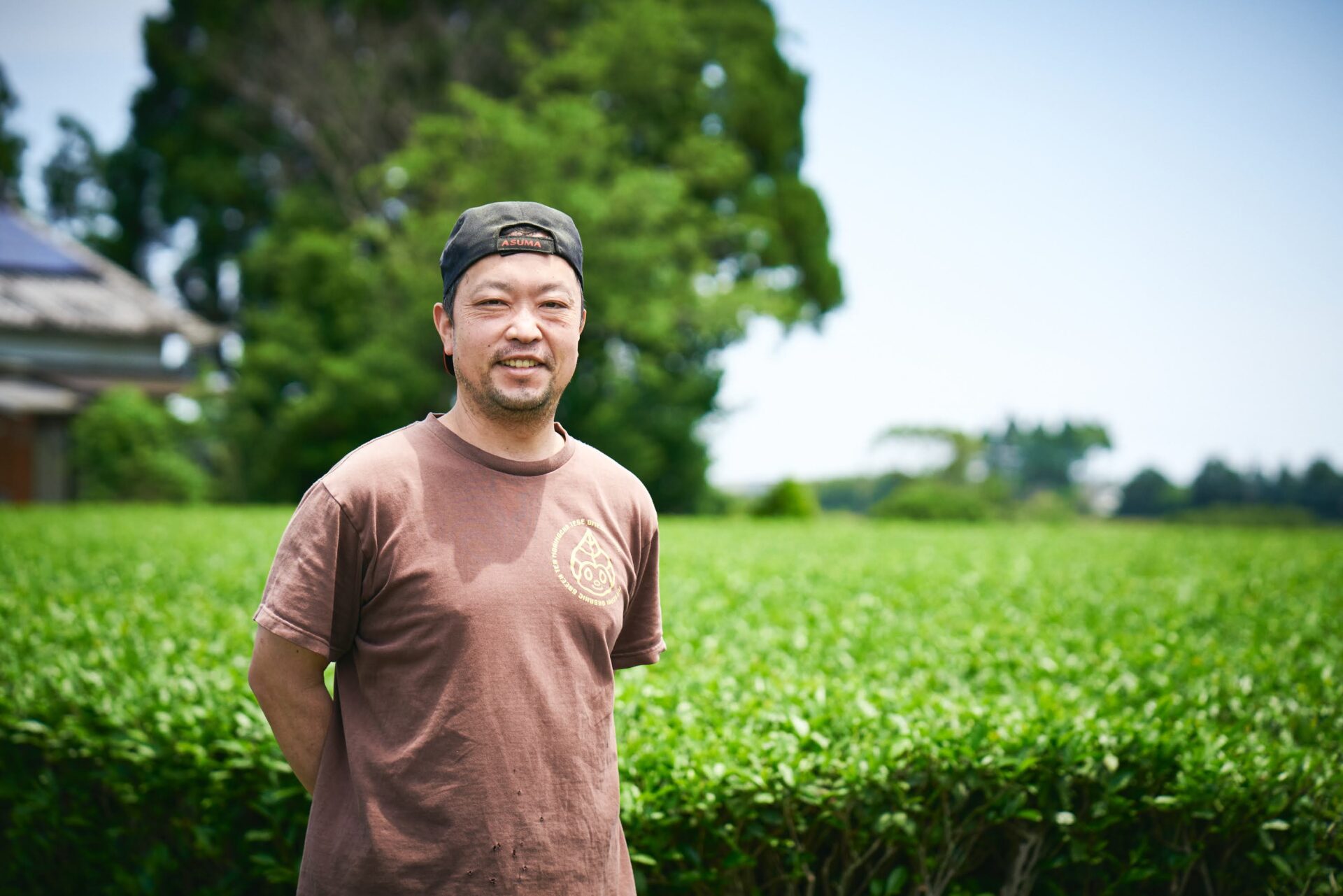The arrival of spring brings the start of the first harvest season for green tea leaves, called “shin-cha” or “new tea.” The fresh green of the tea leaves which withstood the fierce cold weather of the winter are vibrant and vigorous and the rich and fresh aroma of shin-cha is a specialty that can only be enjoyed for a short time each year.
In 2022, the DIG THE TEA team will travel with Ryo Iwamoto, a tea ceremony master and CEO of Japanese tea startup “Tea Room,” to visit various tea plantations around Japan and discover the unique scenes of shin-cha production.
In mid-May, we visited Miyazaki Prefecture, a region with fertile land, mild climate, moderate rainfall, and they are also the fourth largest producer of tea in Japan.
In Shintomi Town, which is adjacent to Miyazaki City, we visited Houryokuen, which has been growing organic tea for 24 years, and Shinryokuen, a leading Japanese tea store that paved the way for creating the Miyazaki tea brand.
Land of fertile soil, long daylight hours, and one of the largest tea productions in Japan
In Miyazaki City, a tropical scenery meets the eye.
As soon as you step out of Miyazaki Airport, you are surrounded by the bright blue sky and palm trees, and you get a sense that summer is just around the corner. We met up with Mr. Iwamoto and drove about 30 minutes to Shintomi Town, a region known for tea production.
As we gazed out the car window at the blue sky, the green of the mountains and farmlands, we arrived at the peaceful town of Shintomi, where we were surrounded by the scenery of the rice fields all around us.
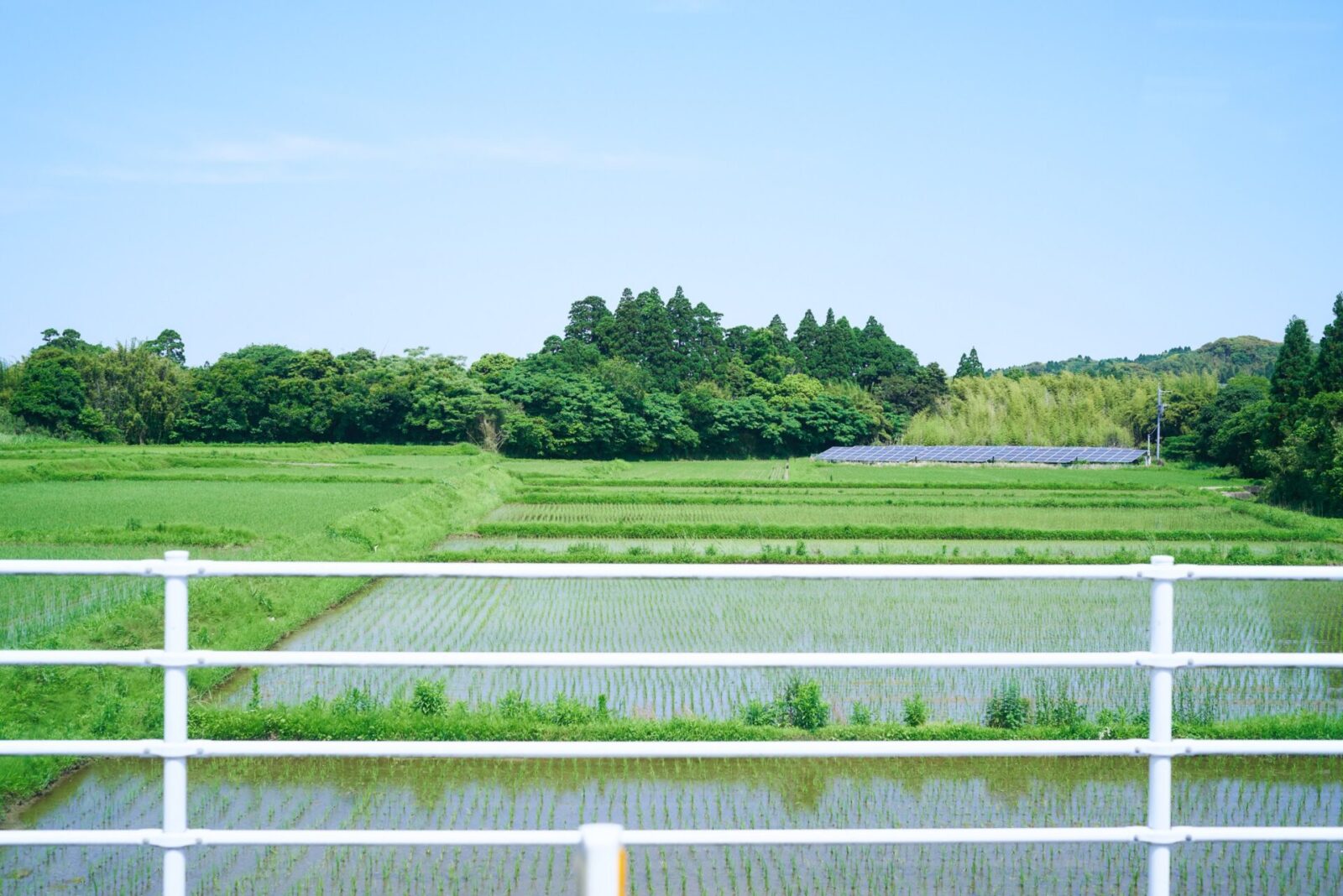
Miyazaki Prefecture is known for its temperate climate and ranks third in Japan in both warm temperatures and long daylight hours, and ranks second in the number of sunny days. It is also known as the “land of sunshine and green” for its rich green environment.
In 2019 and 2020, it ranked number one for two years straight as the “most happy” prefecture in Japan.
Above all, its climate and soil are ideal for tea cultivation. Miyazaki has the seventh largest land mass of tea plantations and is the fourth largest producer of rough tea in Japan.
The tea grown in Miyazaki Prefecture is known as “Miyazaki Tea.” It is rich in amino acids and catechins, and is characterized by its full-bodied flavor, rich aroma, and refreshing flavor.
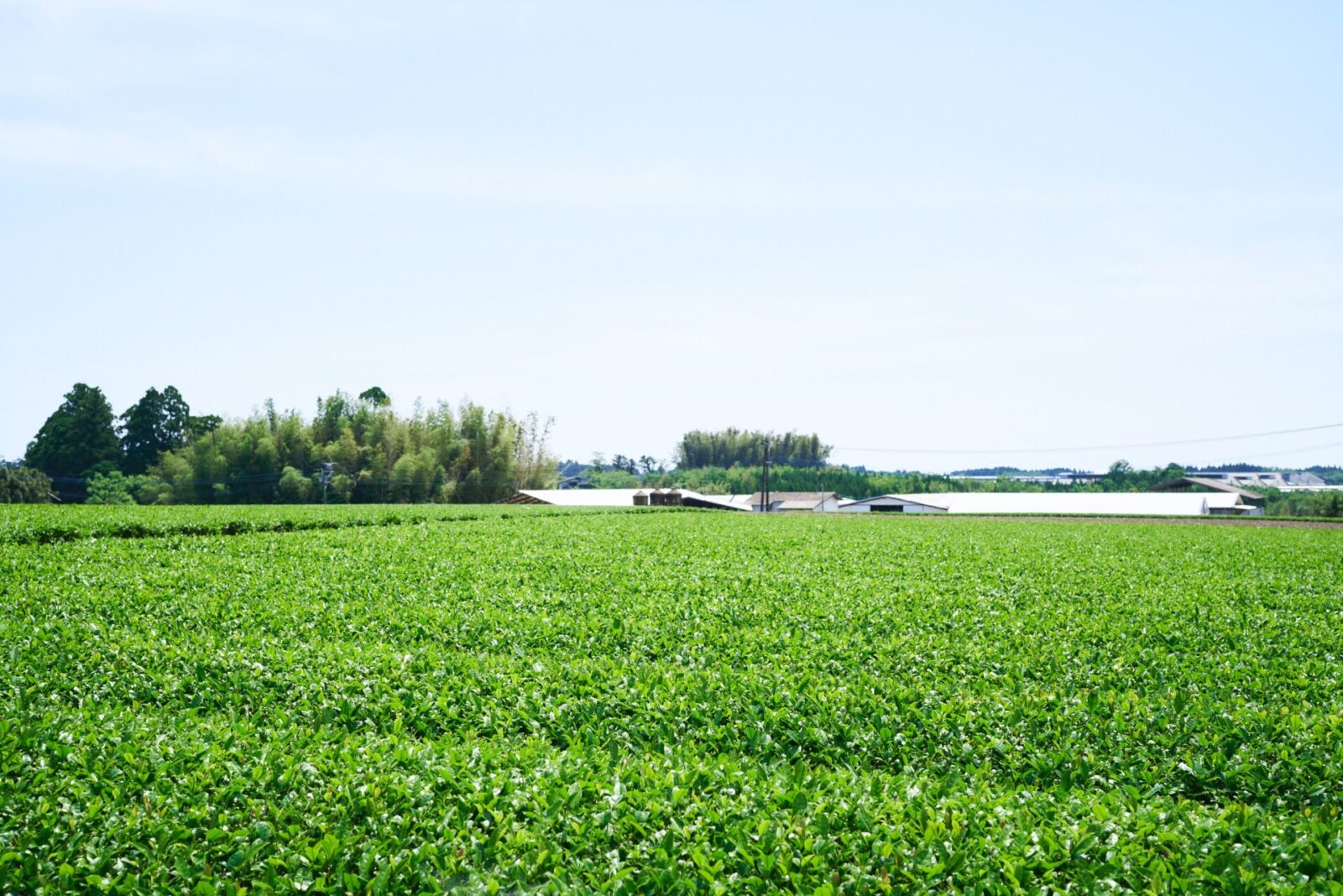
Houryokuen’s beautiful, organic tea plantation
Our first stop was Houryokuen, which is located in Shintomi Town and the center of Miyazaki Prefecture.
Houryokuen has been in operation for three generations and over the past 24 years, they have been making organic tea, free of pesticides and chemical fertilizers. They are involved in all the processes from production to processing and sales of their original brand products and are popular throughout Japan.
The shin-cha season is the busiest time of year for tea farmers and they work non-stop from morning to late at night, picking and making tea.
Our visit was peak picking and processing season at Houryokuen.
While he could not leave the factory, the representative of the company, Kentaro Morimoto, found time to show us around their tea plantation.
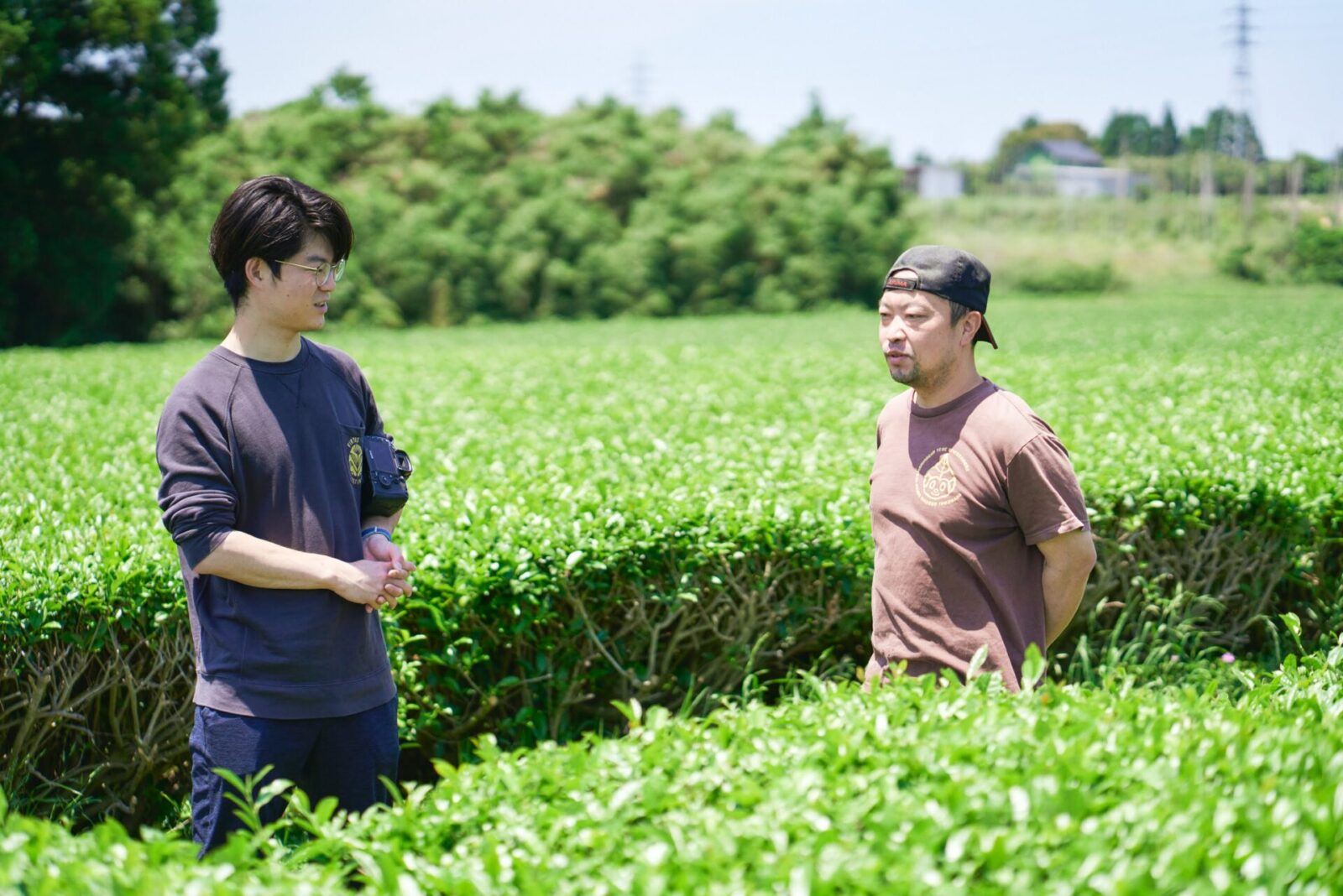
All of the eight tea plantations at Houryokuen are JAS-certified organic. They grow nine varieties of tea, including “Yamanami” at these plantations.
Looking into the bright green shin-cha plantations, we notice that there are wild flowers growing in the soft soil.
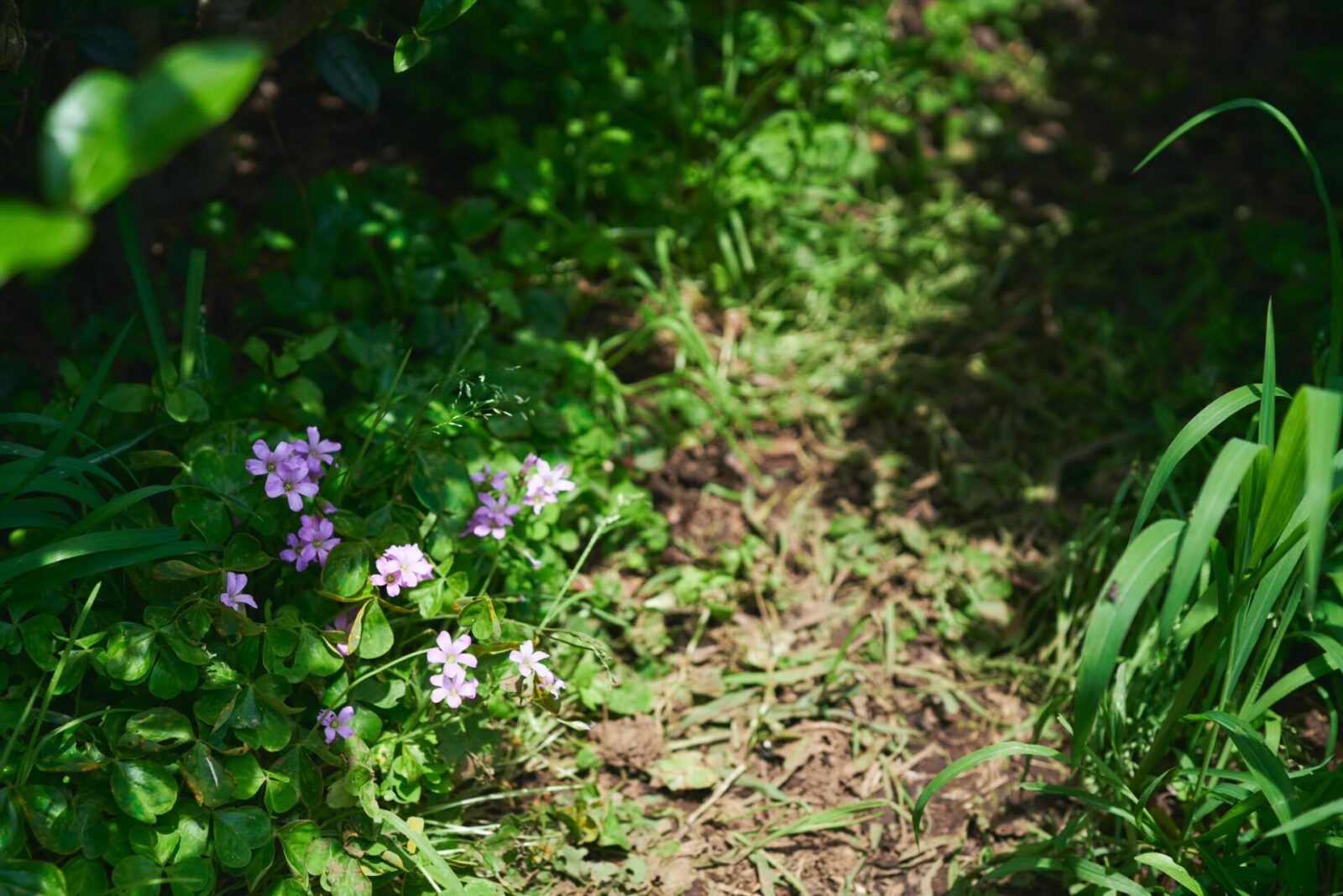
Because they do not use pesticides or chemical fertilizers, the tea plantation is home to a sprawling population of insects such as praying mantis, stink bugs, ladybugs, and more. It was like a little forest where tea trees, insects, and animals coexist in harmony.
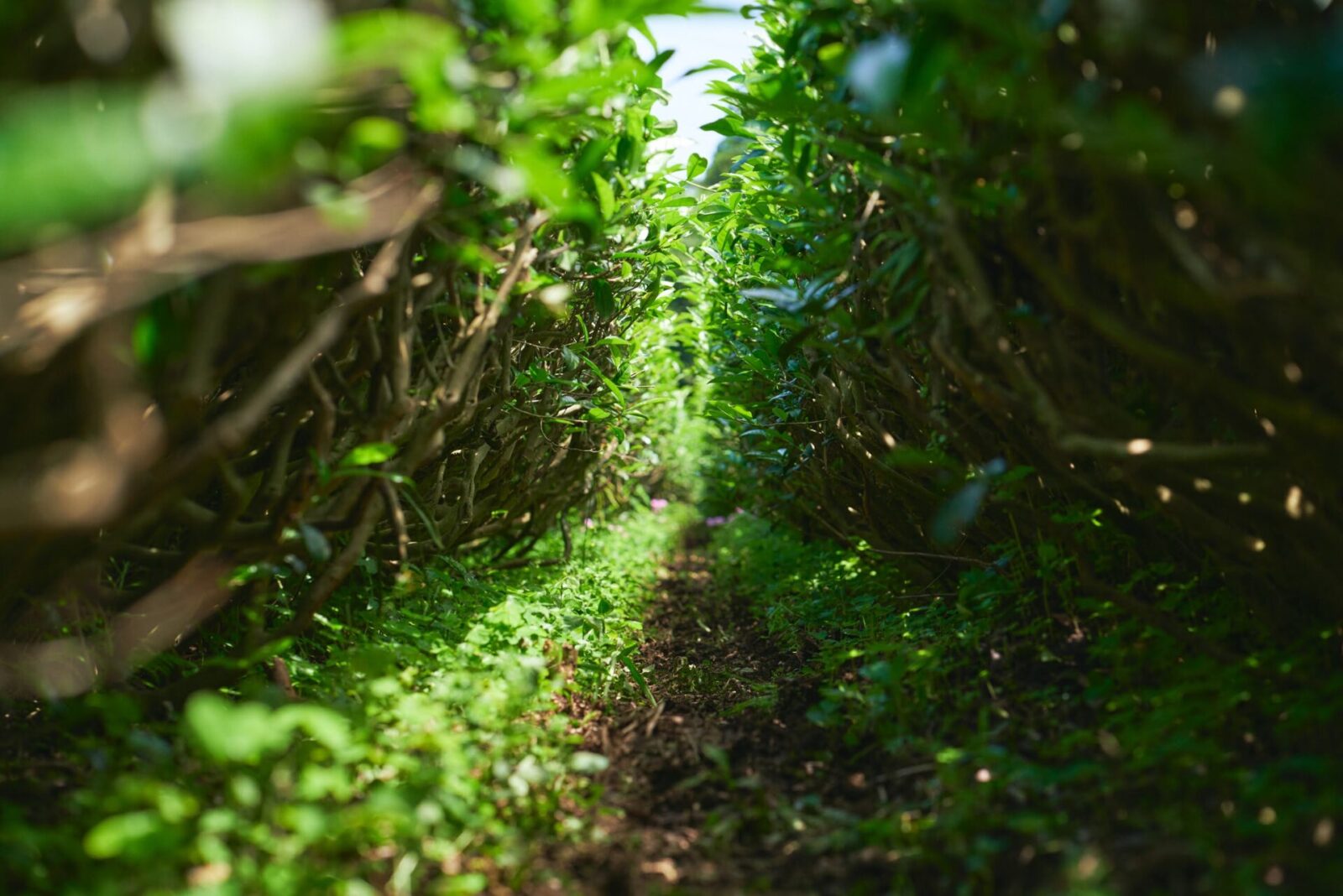
Furthermore, this little forest is very well-kept. Morimoto says that they crawl under the trees and carefully remove the weeds by hand.
“Weeding and removing unwanted insects are all done by hand. We spare no time and effort in taking care of our tea trees and natural environment.”
Morimoto believes that the most important aspect of growing tea is soil cultivation. He says they use pig manure, rice bran, sawdust, and other materials to make their own compost. By using their self-made organic compost, they aim to bring out the inner strength of tea trees and create an environmentally friendly and rich flavored tea.
“Every May, the tea plantations are filled with fireflies.”
He says that the light of the fireflies looks like a light show in the plantations. The plantations are bursting with life and are beautiful and mystical.
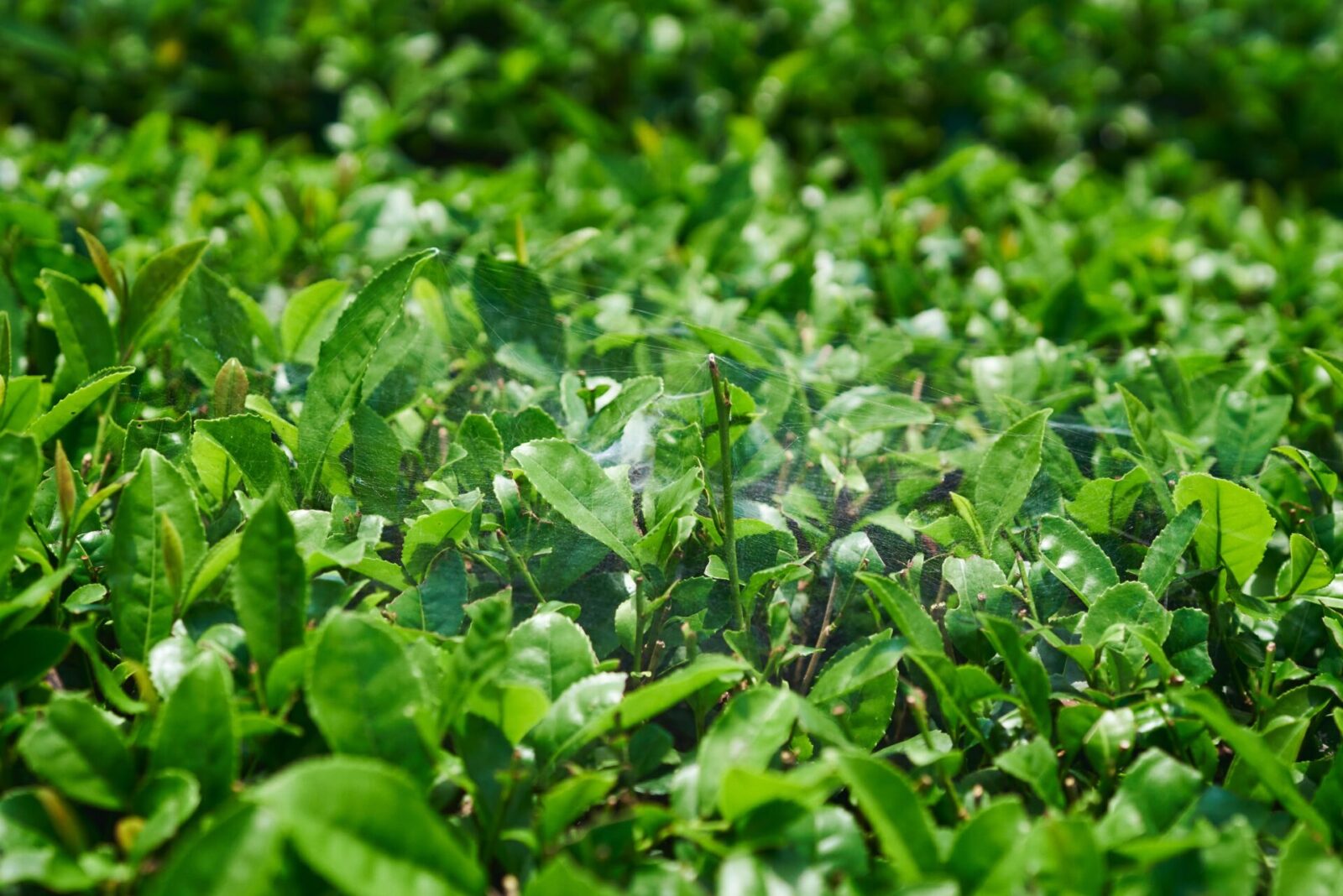
Picking and processing the tea after a year of careful cultivation
After seeing the tea plantations, we visited the factory located just adjacent to the fields.
Inside the factory was filled with the loud noises of the machinery that was working at full speed. On this day, they were processing freshly picked Yamanami tea leaves.
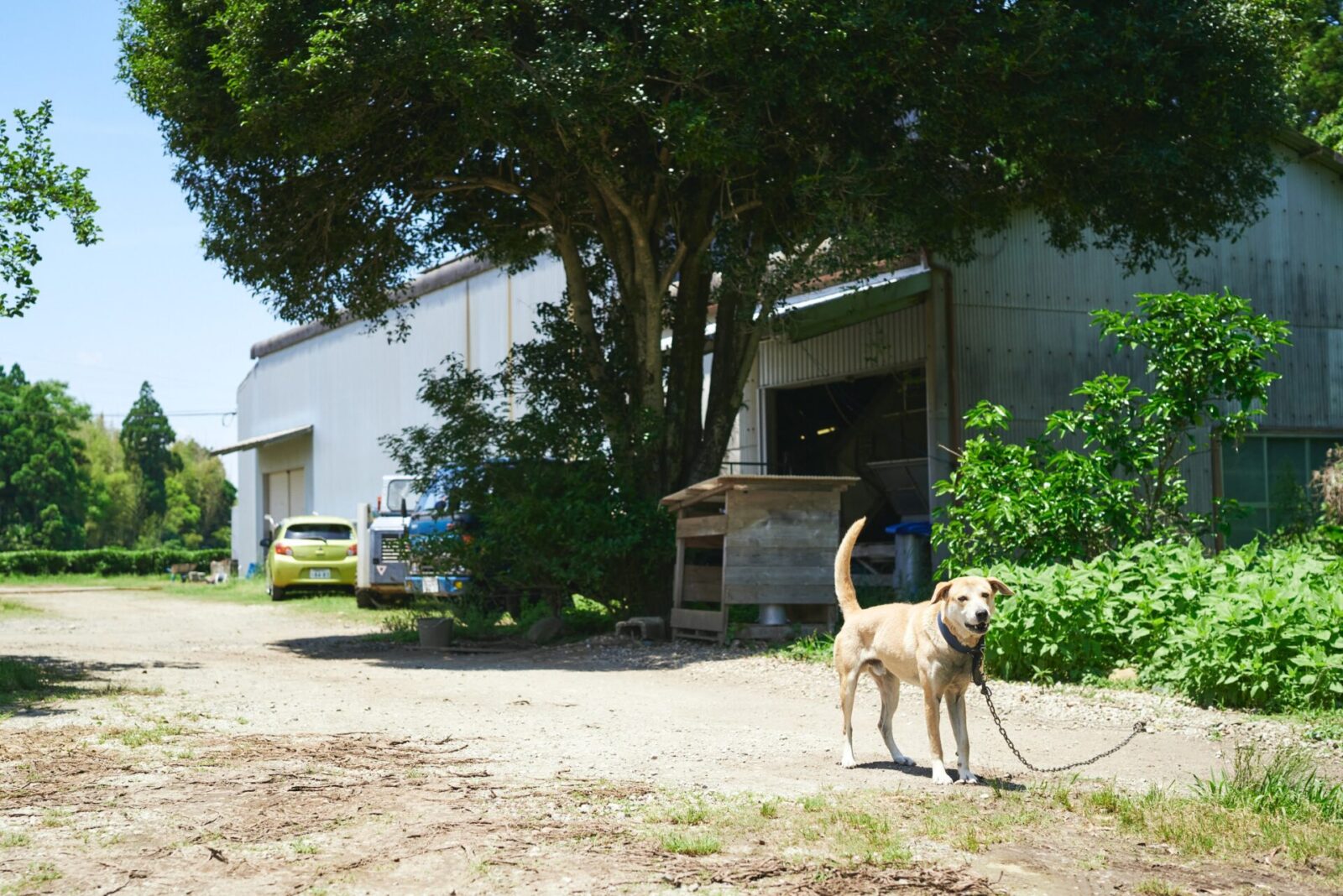
Freshly picked tea leaves begin to oxidize right away so they are steamed immediately to preserve the fresh green color of shin-cha leaves.
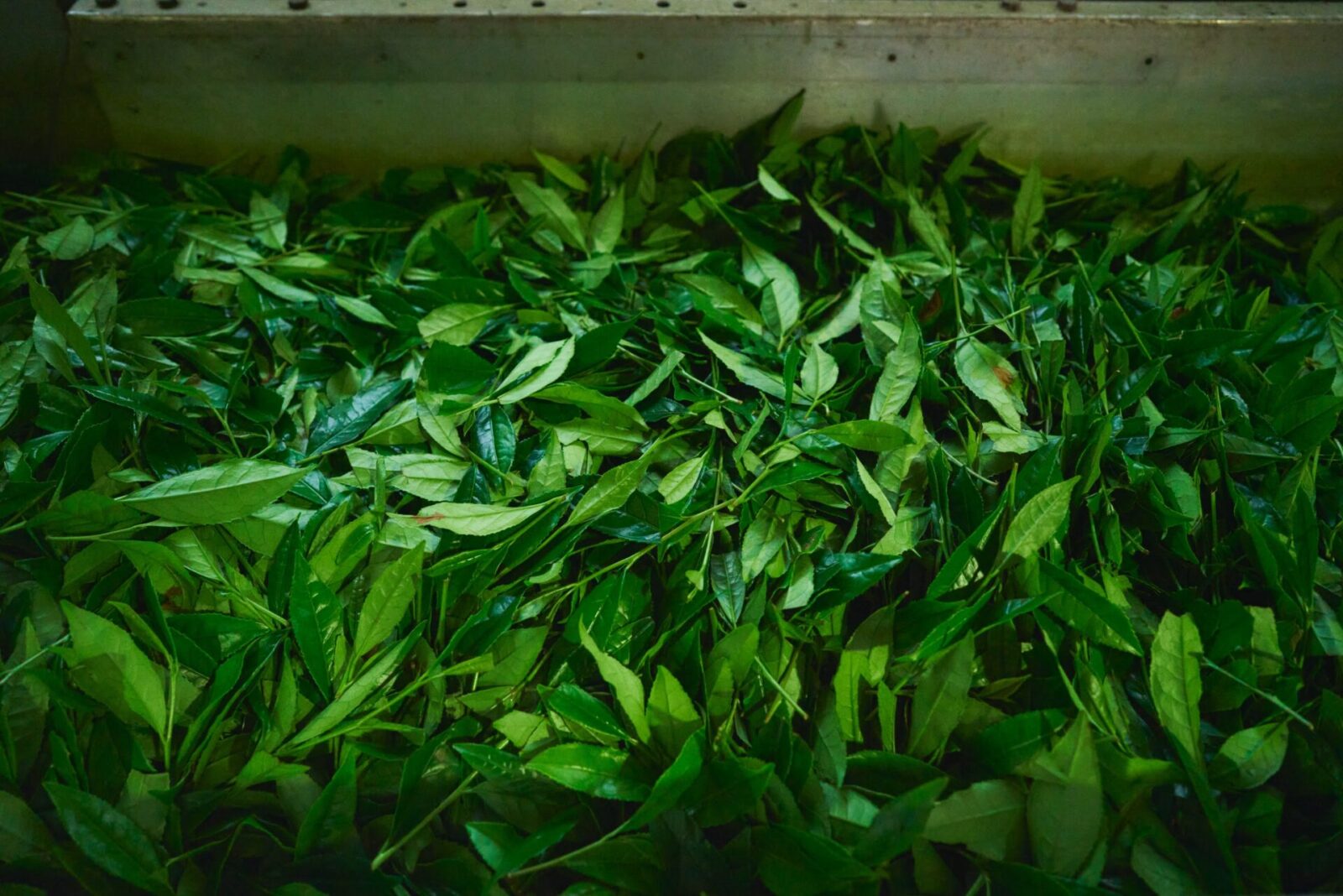

After steaming, the tea leaves go through a rubbing process. The tea leaves are rubbed by adding weight on them to remove water so that they will dry evenly.

When the rubbing process is over, the tea leaves move on to the drying process.
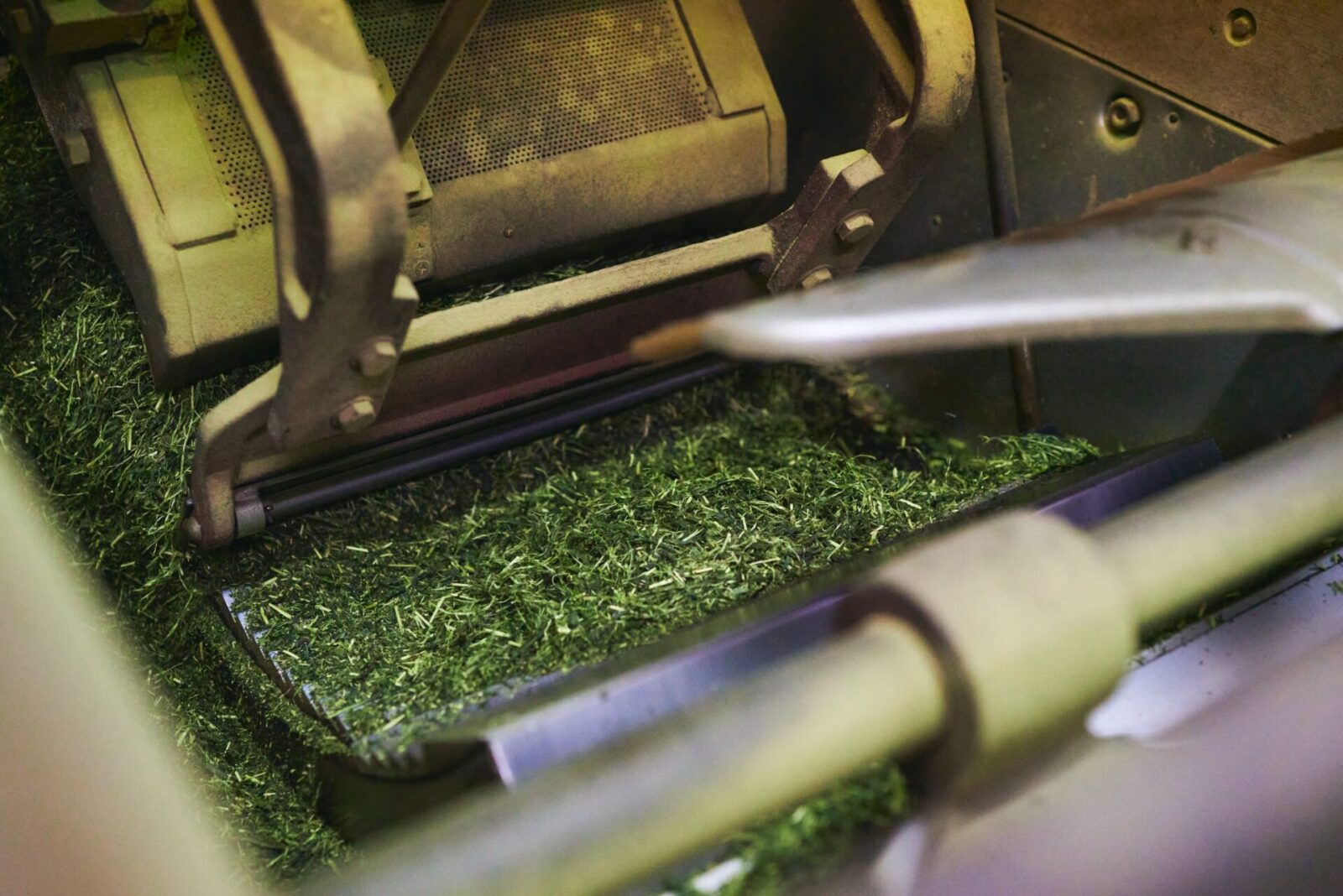
After these processes that take time and care are complete, the tea leaves turn into the beautiful clear-colored tea that we enjoy.
Despite the busy harvesting schedule and exhaustion, Morimoto’s face was full of life and he had an air of joy about him.
Perhaps it was because he was happy with the result of the harvest after lovingly growing the tea leaves for a year.
“An excessively warm winter is not good for tea cultivation. The tea trees need time to rest so it is better if the temperatures are low from November to January. Warm winters also mean more active insects.”
“Ideally, there would be a cycle of three cold days and four warm days and moderate rainfall in the spring. This year we had a period of heavy rainfall before the harvest, but the end quality looks good and we were able to produce Yamanami tea that has the distinct cherry-like aroma.”
Tea, rice cakes and beyond at “Midori to Suzume”
Houryokuen began production and sales of their original brand “Morimo-cha” in 2012.
Besides sencha and hojicha, they have a number of unique and original products, such as their Full Moon tea, which is made from tea harvested under the full moon, and Miroku tea, which is a high quality bancha that is blended with roasted brown rice.
In 2020 they opened a tea and rice cake shop called Midori to Suzume near the tea factory, where they serve desserts made from their Morimo-cha brand teas.
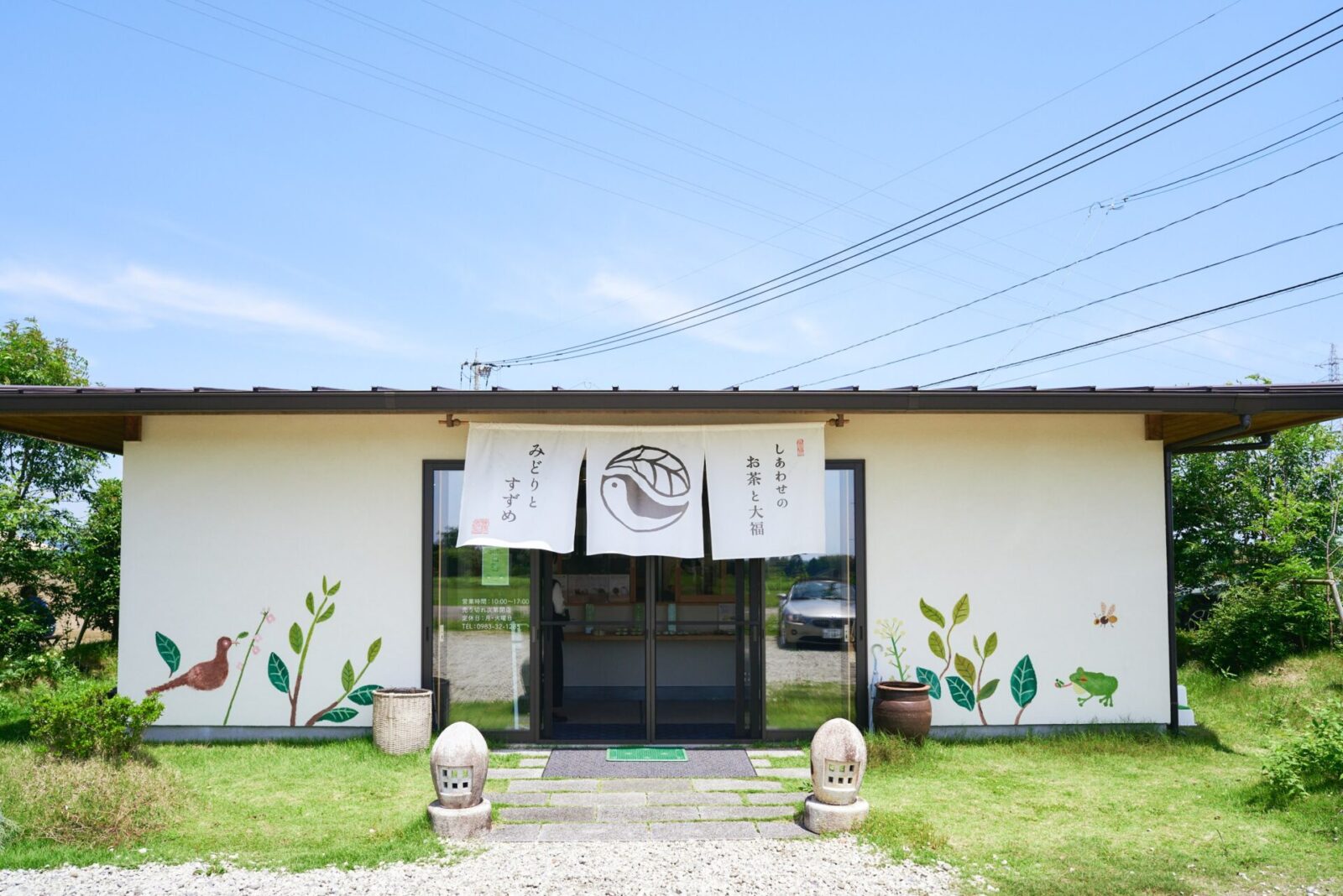
The most popular item on their menu at this shop are their rice cakes made from their organic matcha. Plenty of matcha is used in both the filling and the skin of the rice cake.

Other popular menu items include seasonal desserts such as shin-cha and hojicha rice cakes, gelato, shaved ice made from tea, and zenzai (sweet red bean with rice cakes).
There is a space inside the shop to enjoy the desserts, but when the weather is nice it is most enjoyable to sit outside where there is a wonderful view of the surrounding fields.
“We opened the shop because we wanted to create a space where we can provide more experiences with tea. We think that even for people who are not accustomed to tea, having tea in the form of desserts allows them to experience its delicious flavor.”
As a shop that allows one to casually enjoy desserts that are unique to a tea farm, their shop is proving popular across multiple generations and their customers gather from all around Japan.
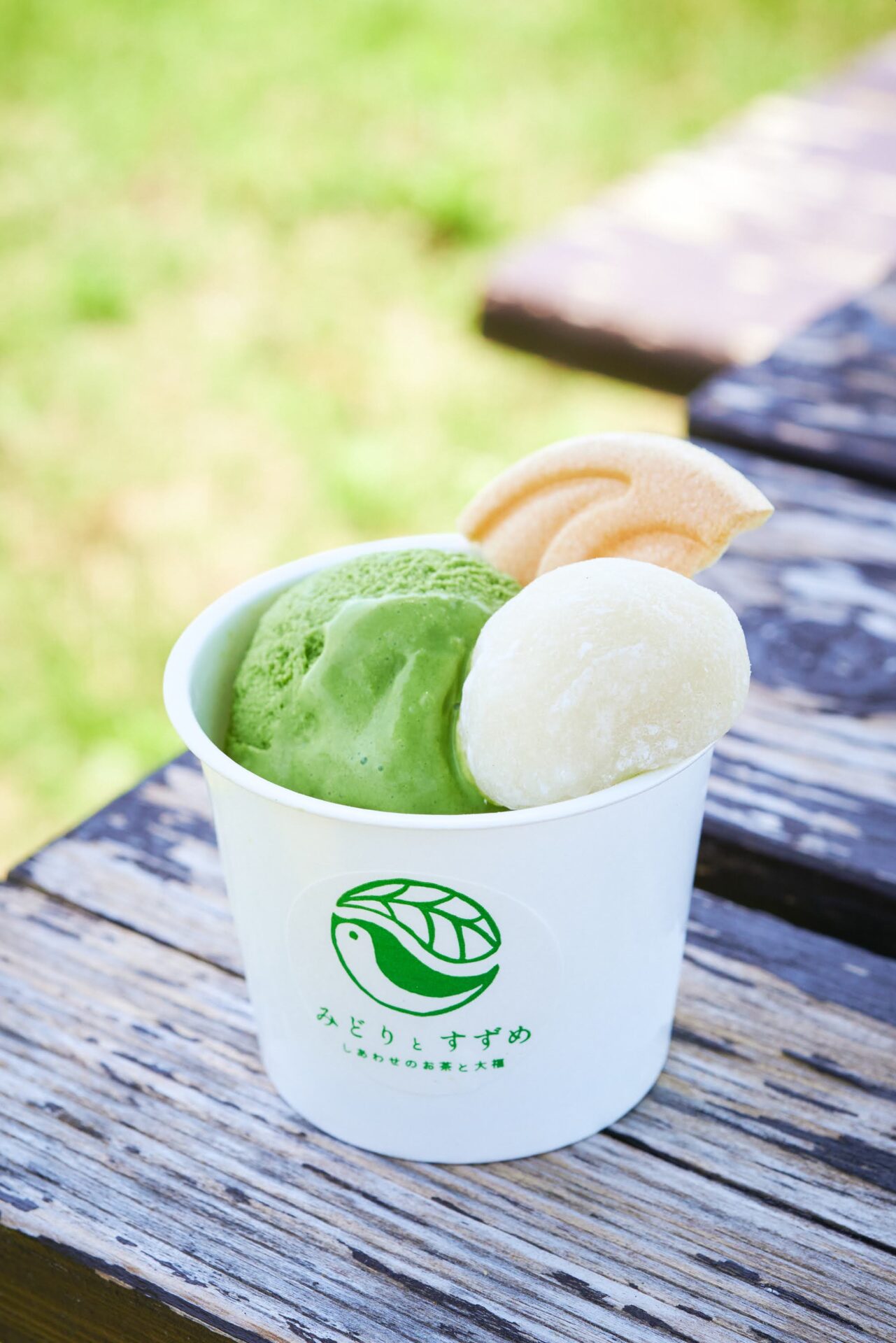
Morimoto says, “Tea is fascinating because it has a lot of potential as a food ingredient.” Besides being a beverage, there are a lot of possibilities to use tea in foods.
Although the consumption of tea has been decreasing in Japan, they hope their products will promote new ways of enjoying tea so more people can rediscover its appeal. Houryokuen is leading the way for the future of tea by promoting tea as delicious, fun and fashionable to all generations.
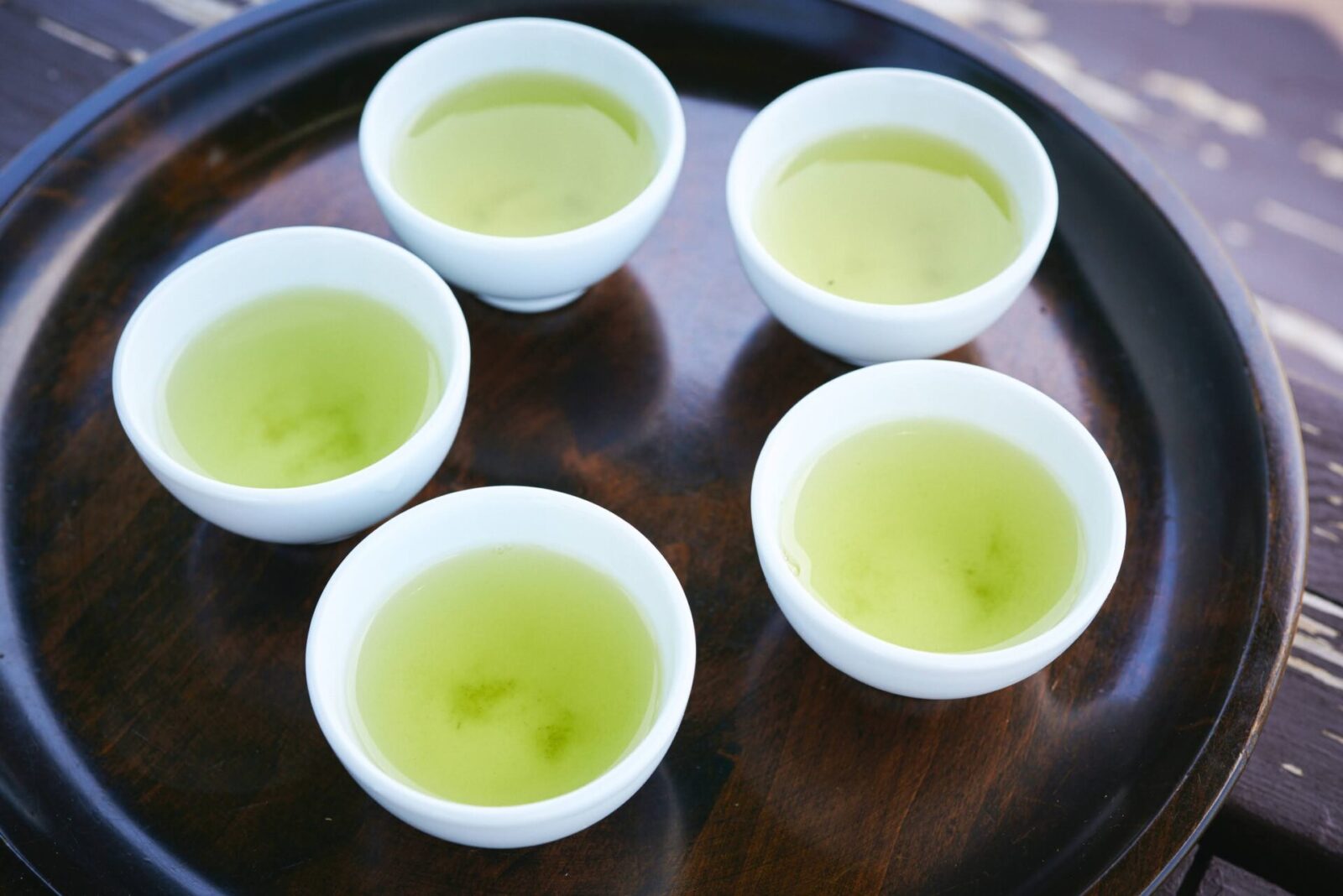
Telling Miyazaki tea’s story to the world
Our next visit was to Shinryokuen, a specialty shop of Japanese tea that is also located in Shintomi Town.
Shinryokuen manufactures and sells about 70 types of tea. Their products come from tea from their own tea farm and also by blending with other high-quality Miyazaki teas.
They have been awarded with the Minister of Agriculture, Forestry and Fisheries Award four times at national tea fairs and the Platinum Award at the Japanese Tea Award. Their sencha tea bags have even been used by All Nippon Airways (ANA) on its international first-class flights, and they are garnering attention from all over the country.
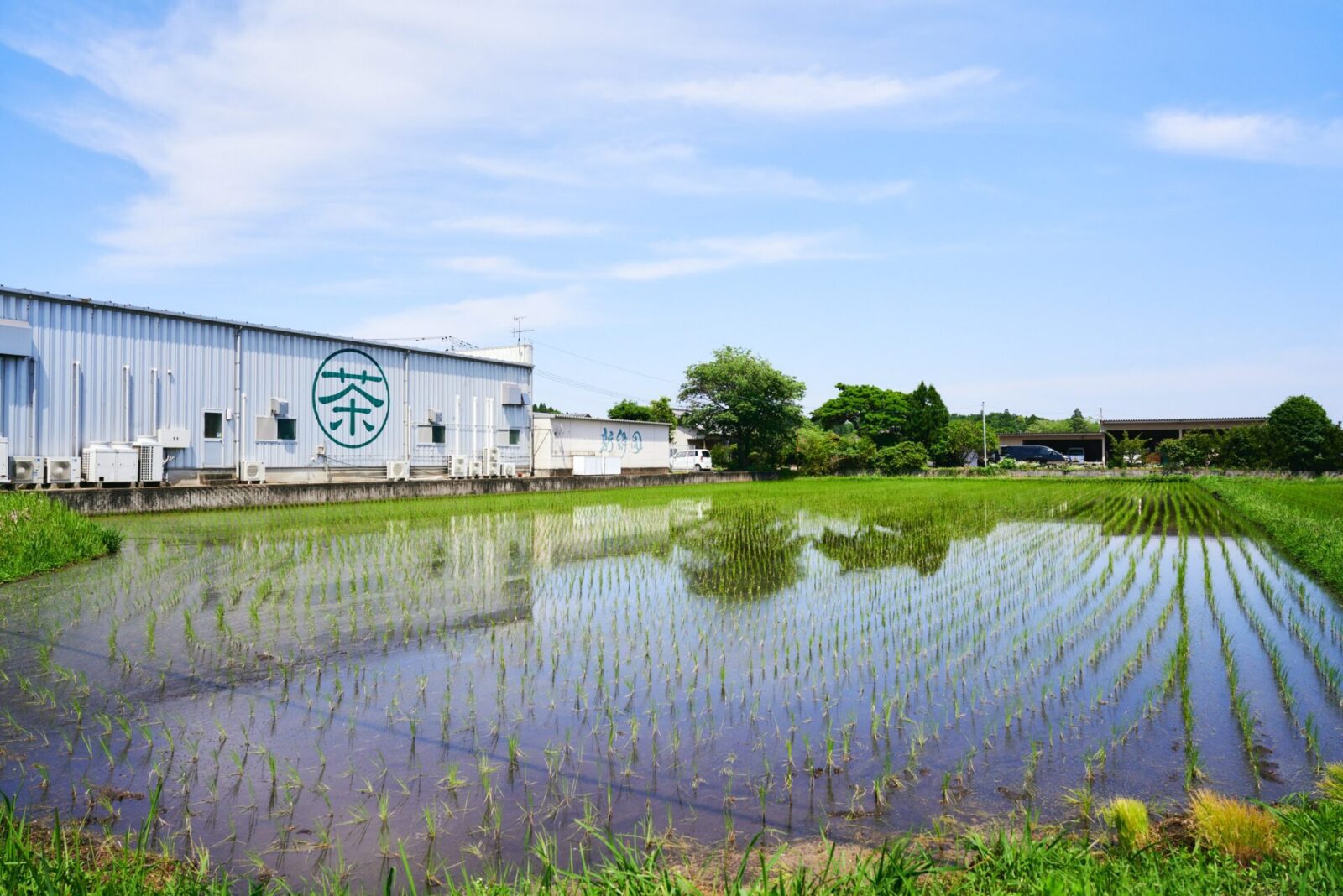
After entering the shop entrance, we were warmly greeted by the staff and we noticed the beautiful designs of the shop interior and product packaging. Sophisticated yet welcoming, you get a sense of the store’s ambiance right away.
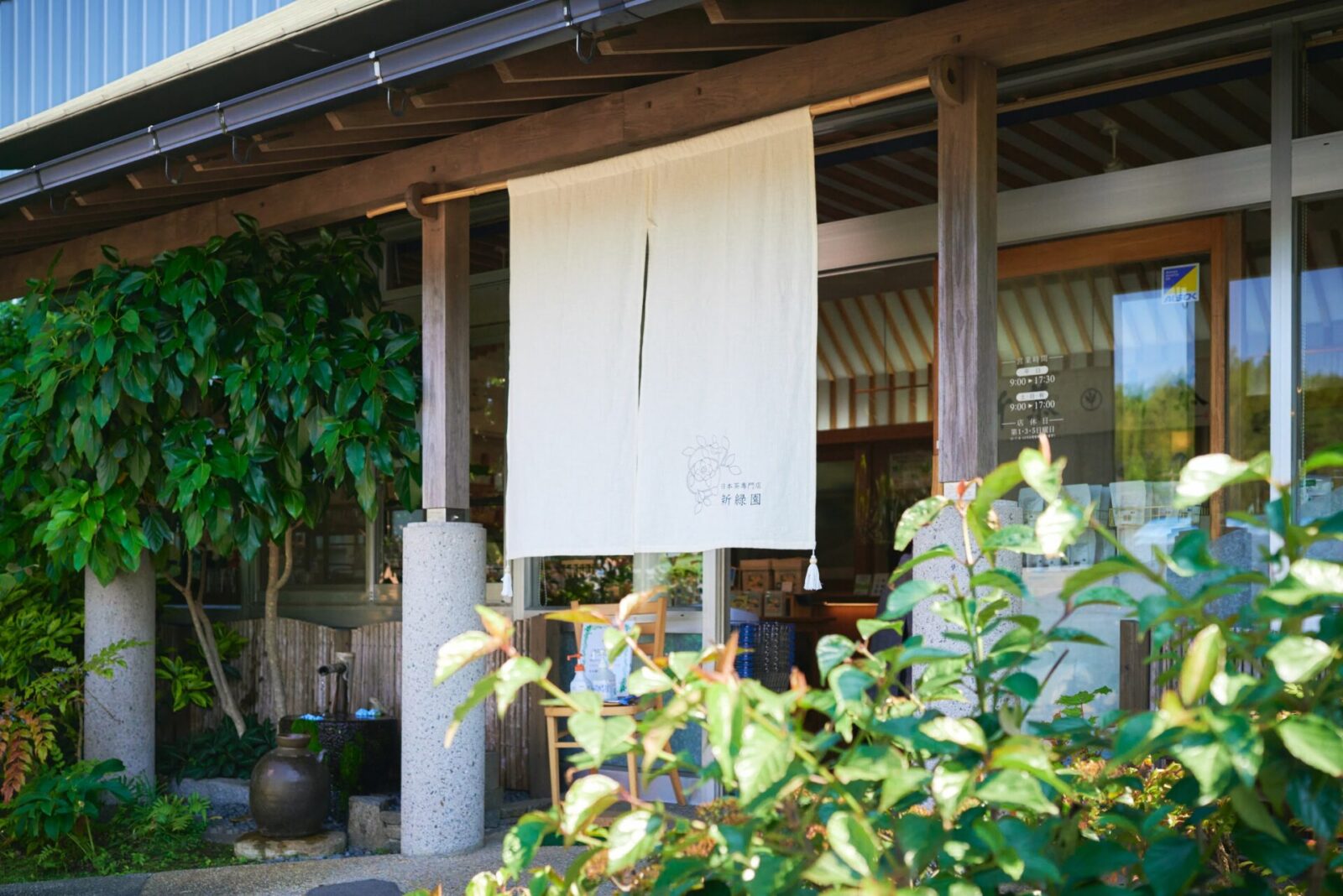
Inside the shop, the products are lined up very fashionably.
In one corner they sell tea utensils and in another corner there is a tea incense burner to enjoy the aroma of tea. Throughout the store, they present different ways to enjoy tea.
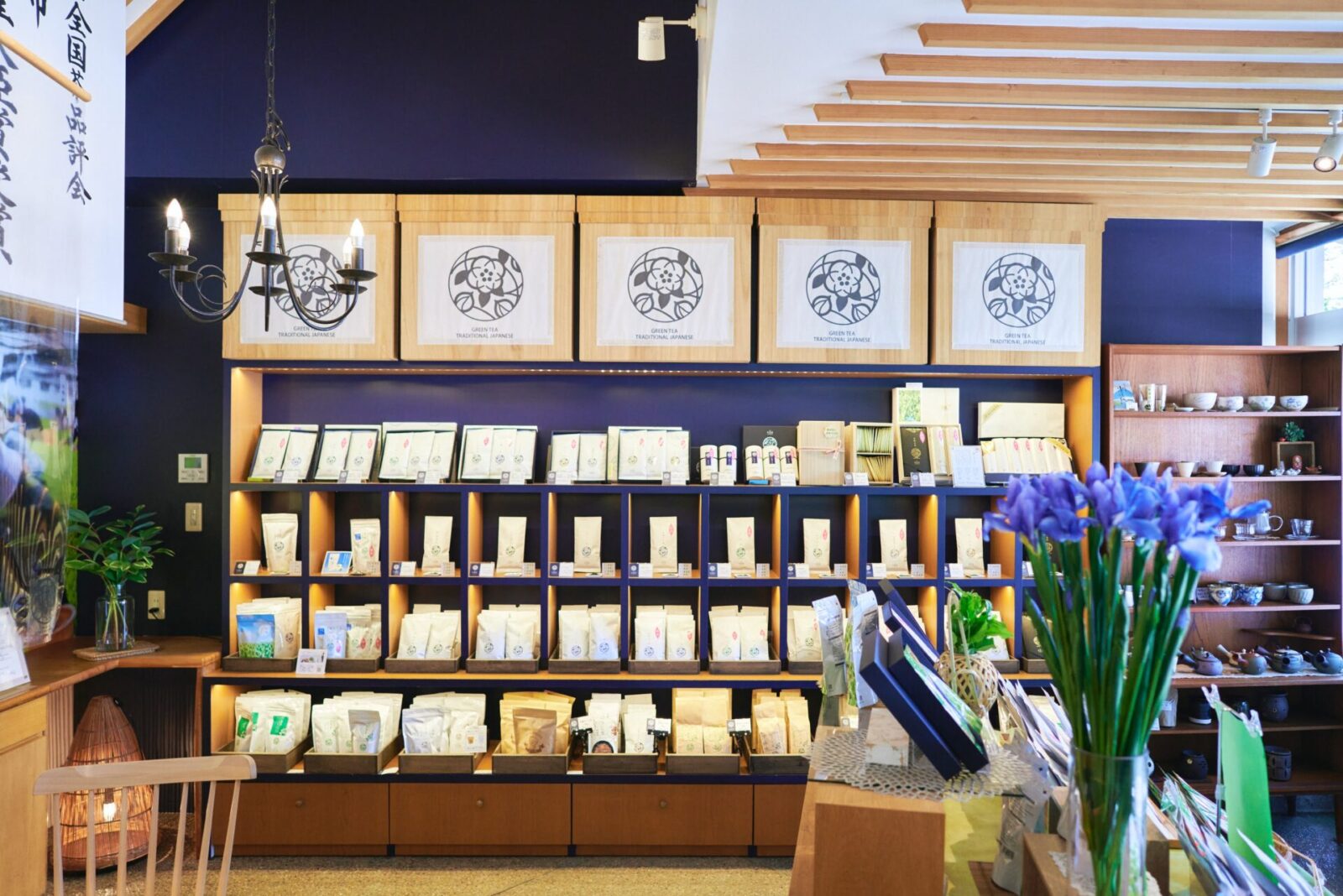
The shop is based on the management principles of Shingo Kuroki, the second generation and current president of Shinryokuen.
Kuroki says, “We do not see tea as a mere beverage, but would like to propose tea to our customers as a source of spiritual enrichment, joy, and inspiration, and perhaps sometimes as a cure for their sorrows. Our mission is to promote green tea culture, its history, and various ways to enjoy tea.”
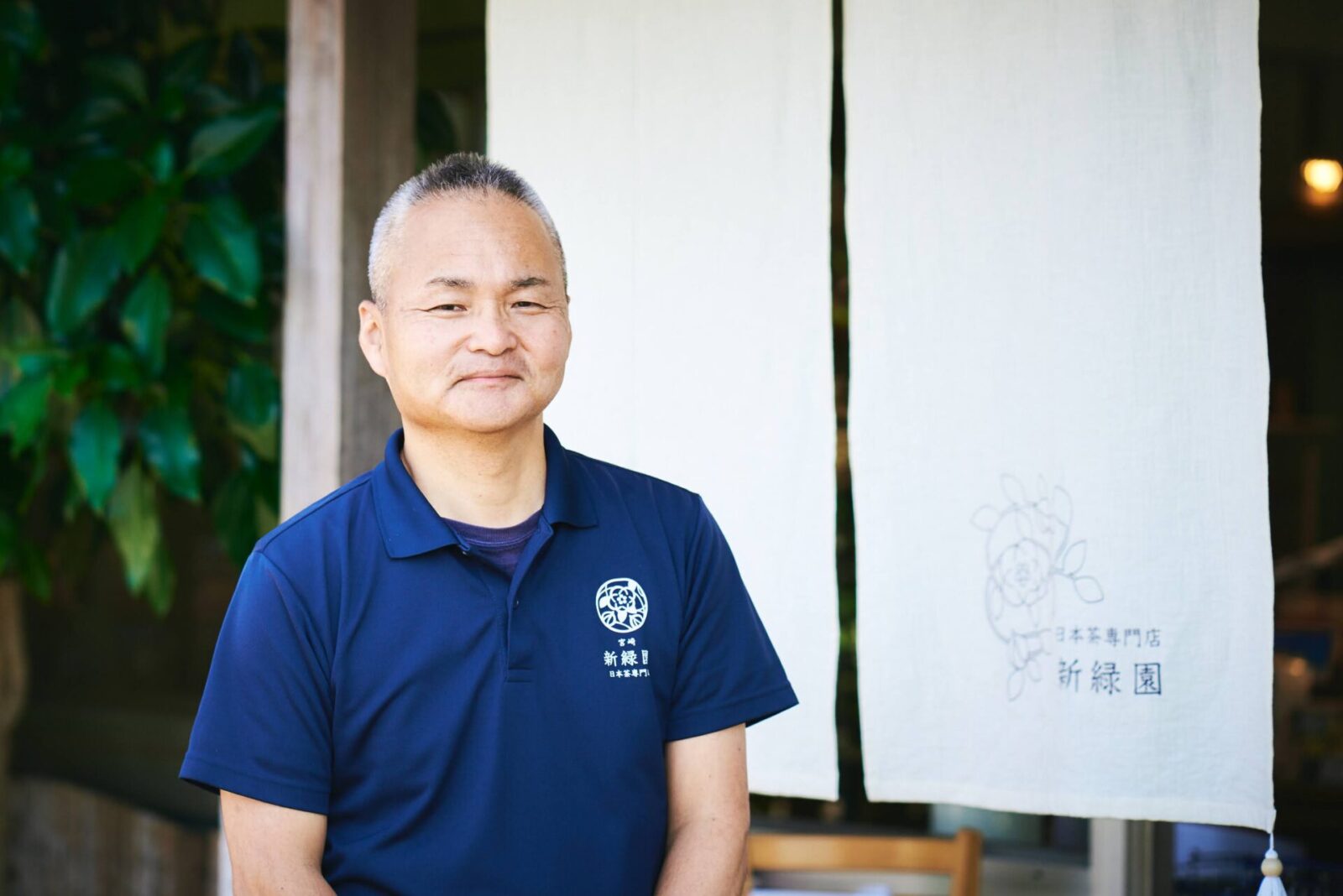
Kuroki is an expert in all things tea. He is a certified tea connoisseur with level nine tea appraisal qualification, meaning he can judge the tea production region, variety, tea season and more. In addition to their own tea farm, he blends selected high quality tea leaves from Miyazaki to make the approximately 70 varieties of tea.

Although Shinryokuen has won awards both domestically and internationally, and is used in the first class services of ANA, it wasn’t until 2015 that the company made the decision to change direction in their operations.
Their business had experienced two consecutive years of losses, so they revamped their traditional business practices and shifted their focus on marketing, product design and developing their human resources.
“Around that time, we were chosen as the best in Japan in a tea tournament held in Miyazaki, so that also gave our business a great boost.”
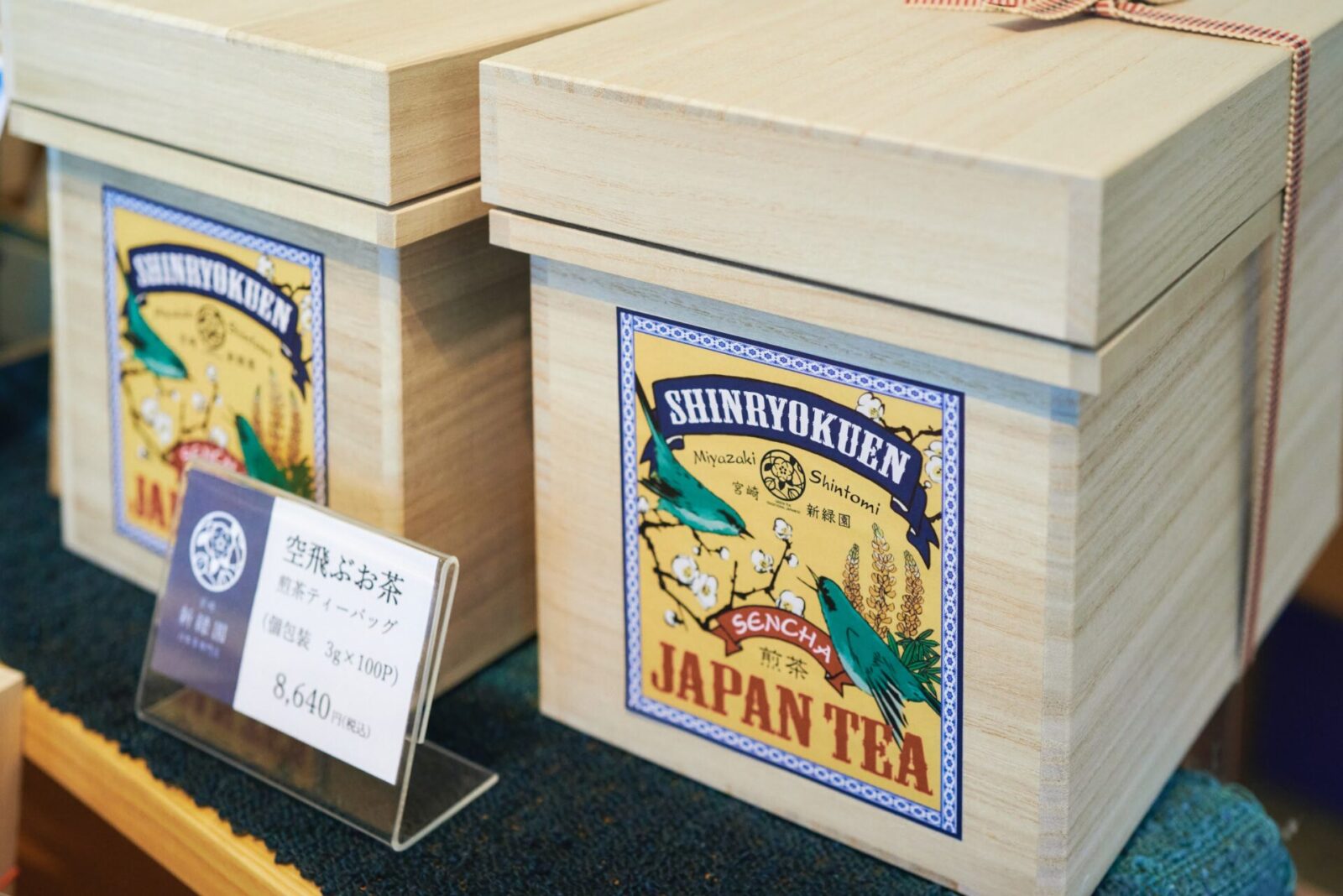
Kuroki was always confident in the quality of their tea. However, he realized that simply making good quality products was not enough to expand as a business.
Kuroki looks back at that time and says, “At the age of 50, I had to learn everything from sales, promotion and branding from scratch.”
The efforts put into product development and branding paid off and the number of regular customers continued to increase. He says that it also attracted more young local workers that desired to work for their company.
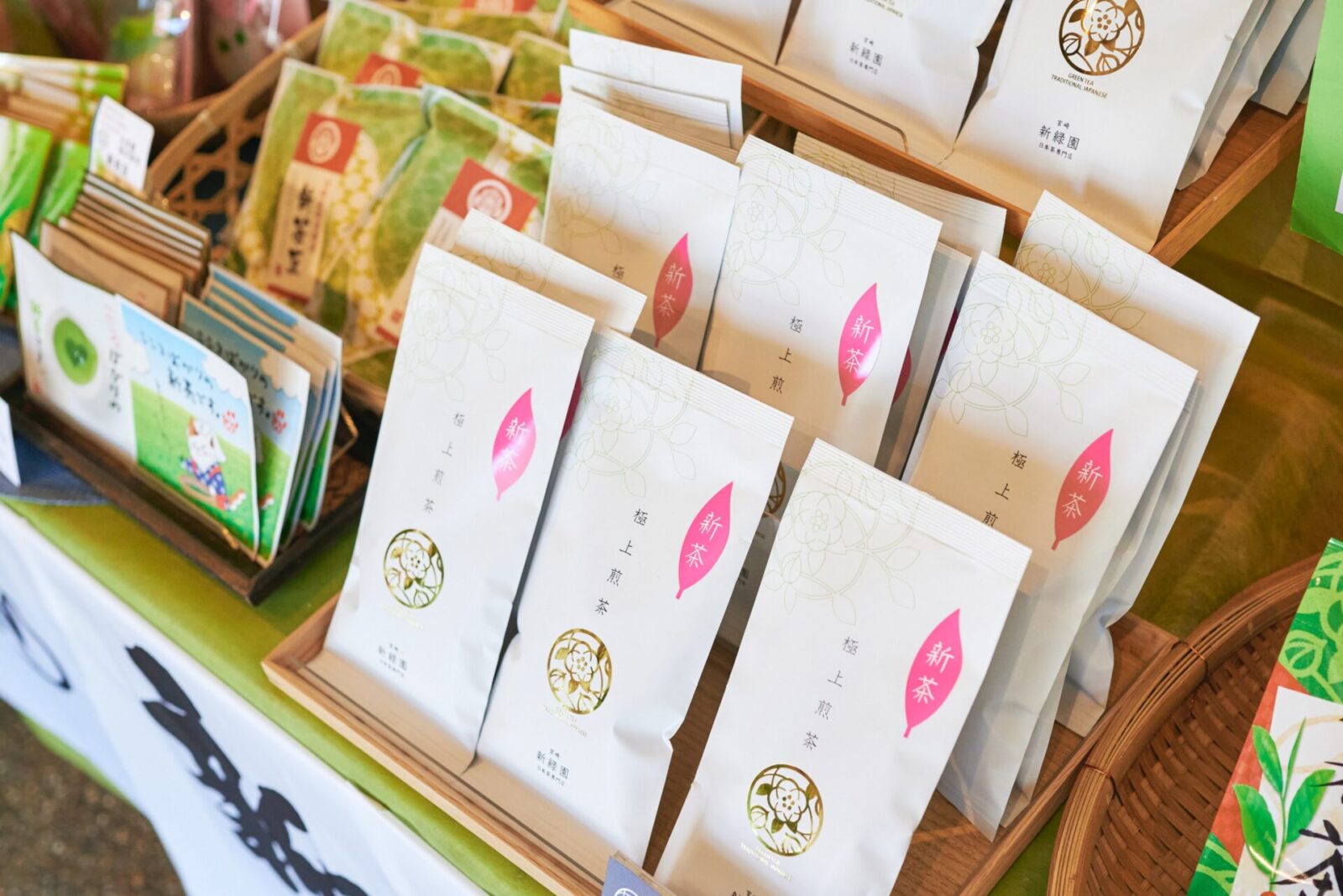
The flavors of Japanese tea is often expressed in terms of umami, sweetness, astringency, and aroma, but according to Kuroki, “Miyazaki tea has a more fresh flavor, so it is easy for those who are not accustomed to drinking tea to enjoy it as well.” He says he hopes that he can promote that aspect of Miyazaki tea to many people.
This hope is not only that of his company, but of the whole tea industry in Miyazaki.
If more people, both domestic and international, become consumers of Miyazaki tea, it would help to revitalize the tea farms in Miyazaki. Kuroki says that his goal is to create that kind of positive cycle in the tea industry as a whole.
“My dream is for people to view working in tea shops and tea production as a cool and attractive job.”
Miyazaki tea is not as well known as tea from Shizuoka or Kyoto, but we felt that the people in the region were coming together to achieve their vision.
Although it may not be as famous, we could see why the organic and original brands of Miyazaki tea are growing in popularity throughout the world.
Our travels to discover Japan’s freshest tea harvest will continue.
Photo: Umihiko Eto
Translation: Sophia Swanson
Yuko Souma is the director of Delightful LLC and was born in 1976 in Chichibu City, Saitama Prefecture. Souma began their career working as an assistant to editor and writers at a production company while studying at Waseda University’s Faculty of Letters, Arts and Sciences. In 2004, Souma was an editor and member of the launch team for the free magazine R25 at Recruit Co., Ltd. They left that role in 2010 and has since produced and edited for magazines, books, online publications, booklets for corporations and municipal governments, and owned media.
